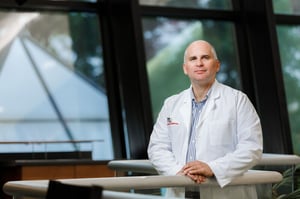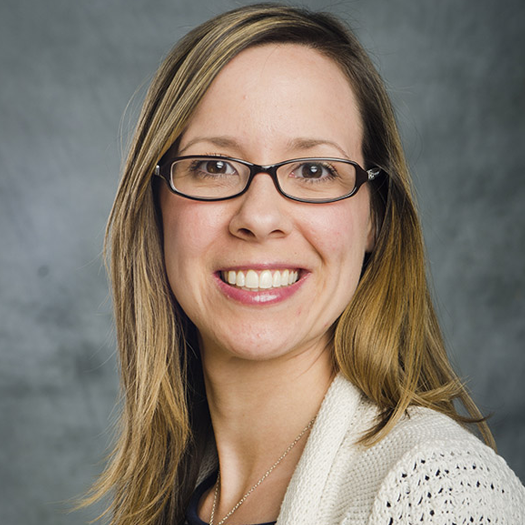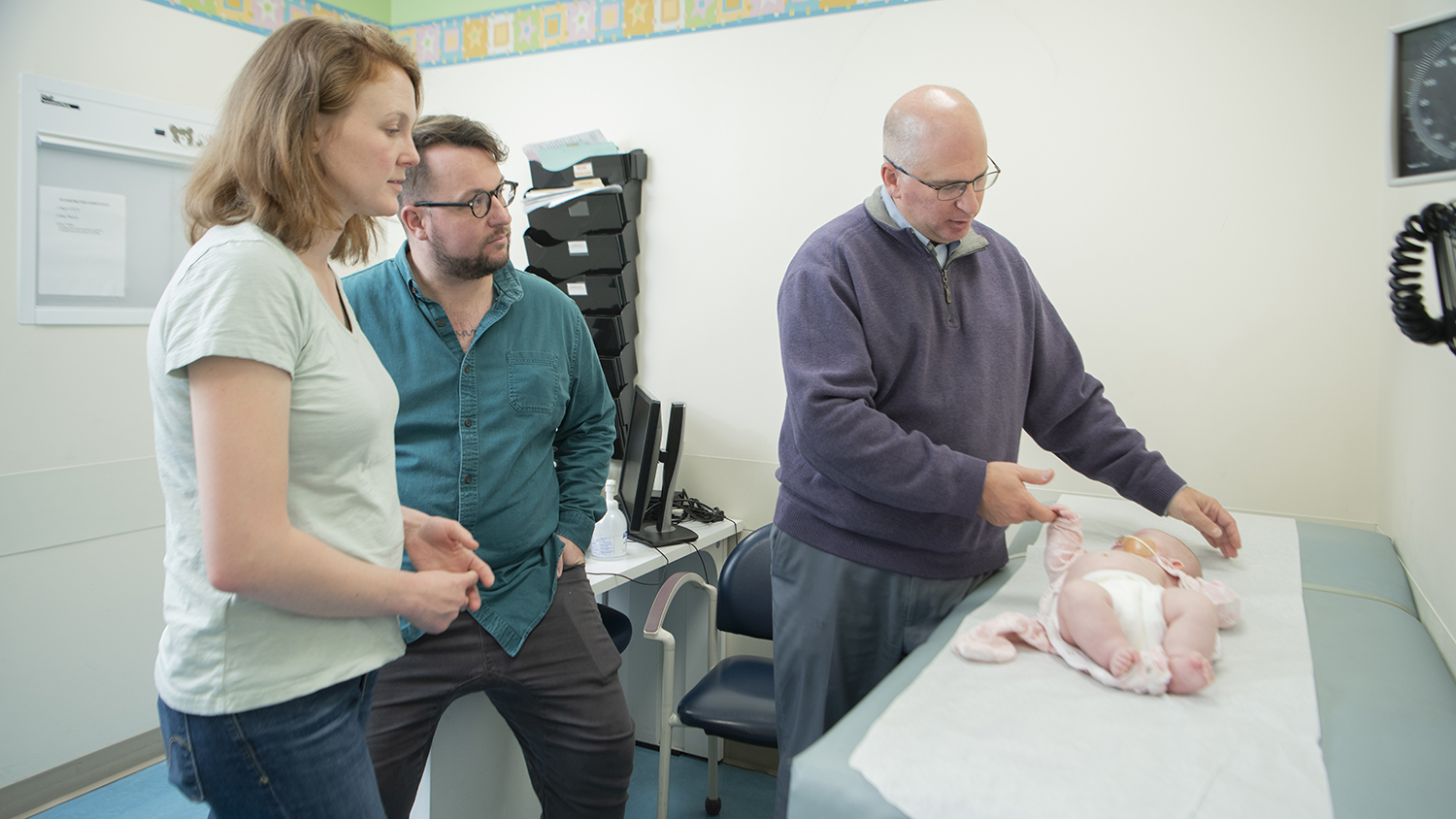Condition
Fecal and Urinary Incontinence Related to the Spine
Fecal and urinary incontinence is common in children who have certain congenital diseases related to the spine that can interfere with bowel and urologic function. These children have normal bowel and urologic structures but cannot control their bowels or urine due to damage or poor development of nerves required to perform these functions. Most suffer from neurological problems where there is a disruption of messages that go from the brain to the bowel. This can cause motility problems and an inability to sense the urge to go to the bathroom.
What are symptoms of fecal and urinary incontinence related to the spine?
Common symptoms for children with spinal disorders that experience incontinence, includes:
- Constipation
- Encopresis, also known as soiling
- Overflow incontinence, involuntary release of urine
- Neurogenic bladder, a condition that leads to frequent urination, retention, urgency to reach the bathroom and urinary accidents at night
What are the causes of fecal and urinary incontinence related to the spine in children?
Spinal disorders that cause incontinence issues include:
Spina Bifida
A condition that occurs when the neural tube (the structure that forms the spinal cord and backbone) does not close completely during an unborn baby’s development. This results in spinal cord and nerve damage that can cause disabilities.
Forms of spina bifida vary in intensity. Myelomeningocele, for instance, is a severe form characterized by a fluid-filled sac formed in the lining of the spinal cord that protrudes through the vertebrae to the outside of the body. Learn more about our Spina Bifida Program.
Absent Sacrum
A rare birth defect where the sacrum — a bony shield-like structure located at the base of the vertebrae — does not develop.
Sacrococcygeal Teratoma
A rare tumor found in newborns at the base of the tailbone that can interfere with bowel and urinary function.
How is fecal and urinary incontinence related to the spine diagnosed?
We offer the latest advanced diagnostic tests and tools to evaluate children who experience encopresis (soiling) as a result of spina bifida, myelomeningocele or other spinal disorders. These disorders are often diagnosed in the fetus. Learn more about our Prenatal Pediatrics Institute.
These diagnostic tests include
- Abdominal ultrasound: to examine the kidneys, bladder and pelvic organs
- Spinal ultrasound: to evaluate for spine abnormalities or other neurological problems
- X-rays: to examine the spine and sacrum
What are the treatments for fecal and urinary incontinence related to the spine in children?
Medical treatments and surgery can often help restore some function of the bowel but gaining full bowel control may not happen so quickly. For these children, fecal and urinary incontinence can cause anxiety, distress, embarrassment and social problems. However, there are effective treatments for fecal and urinary incontinence for children with spine disorders. Our pediatric colorectal and urologic specialists collaborate to create individualized and effective treatment plans to ensure your child gains optimal bowel and urinary control and function. Through a comprehensive treatment plan, children can avoid or greatly decrease incidents of soiling and urinary accidents to achieve a better quality of life.
If your child has bowel incontinence due to spina bifida, myelomeningocele or another congenital birth defect that affects the spine, their treatment plan will likely consist of a combination of different approaches. This may include changes in diet, lifestyle, medications, surgery and participating in a bowel management program.
Our Bowel Management Program implements a customized set of treatments to help your child achieve the ability to stay clean and free from accidents. Your child benefits from working with nutritionists who create optimal diet plans and who offer helpful tips for increasing fiber intake for parents who have kids that are picky eaters. A nurse practitioner and child psychologist oversees treatment plans and adjusts as needed.
Other non-surgical treatments include:
- Enemas and bowel irrigation treatments to loosen stool and flush out waste
- Medications such as laxatives
- A healthy fiber-rich diet
If your child requires surgery, surgical treatments include:
Malone Appendicostomy
A Malone appendicostomy (MACE) is a procedure where your surgeon constructs a valve, or pathway from the belly button to the colon by connecting the appendix to the abdomen. The procedure does not entail the use of any artificial implants or devices because the valve is created using your child’s own tissue. A catheter is placed in the valve where a special solution is administered to flush the colon of stool. Following MACE, your child will spend about two days in the hospital and require follow up visits with your surgeon at one month to ensure they are healing properly.
Sometimes the appendix can be split and used for both the Malone and the Mitrofanoff appendicostomies (similar idea for access to the bladder), and on occasion the segment of the colon to be removed can be added to the bladder to make it larger (bladder augmentation).
Colon Resection
A colon resection may be performed to remove areas of the colon that are diseased, which may include areas of the large intestine, small intestine or rectum. The type of colon resection needed will depend on your child’s specific spinal disorder and the severity of their condition. Your child will typically spend one week in the hospital following a colon resection and require a one month follow-up to ensure they have healed properly and to check for any complications.
What is recovery like for a Malone appendicostomy?
If your child has had a Malone appendicostomy, their catheter will remain in place for approximately one month. It is very important to keep the valve open, as the body will naturally try to heal over the opening. Once the catheter is removed, a type of plug called an ACE stopper will be put in its place for about six months to prevent the opening from closing. Once a day the plug will be removed to flush the colon.
How to Care for Your Child’s Malone Appendicostomy
Your care team will give you detailed instructions on how to care for your child’s Malone once you are home. You will need to flush enema fluid through the catheter once daily when your child returns to eating normally. It is common for the site to have drainage that is clear or light yellow. It is important to keep the Malone tube secured to your child’s abdomen (with clear tape dressing) but do not completely cover the opening. When bathing, clean around the tube insertion with soap and water and then pat dry. You may carefully clean around the area with a Q-tip.
You should call your child’s provider if you notice the following:
- Abdominal swelling during or after flushing the colon
- Fever
- If the area or stitches holding the catheter in place becomes red and irritated
- The tube falls out prior to your child’s follow-up visit
Learn more general information about pediatric urinary incontinence.

Colorectal Treatment at Children's National Hospital
The Division of Pediatric Colorectal & Pelvic Reconstruction offers the latest advancements in diagnosis and treatment for all types of pediatric colorectal disorders. Discover more about the treatments we offer.

Providers Who Treat Fecal and Urinary Incontinence Related to the Spine
 Aasha's Rare Gift Will Help Other Babies Grow up Healthy
Aasha's Rare Gift Will Help Other Babies Grow up HealthyTesting the descrption field














